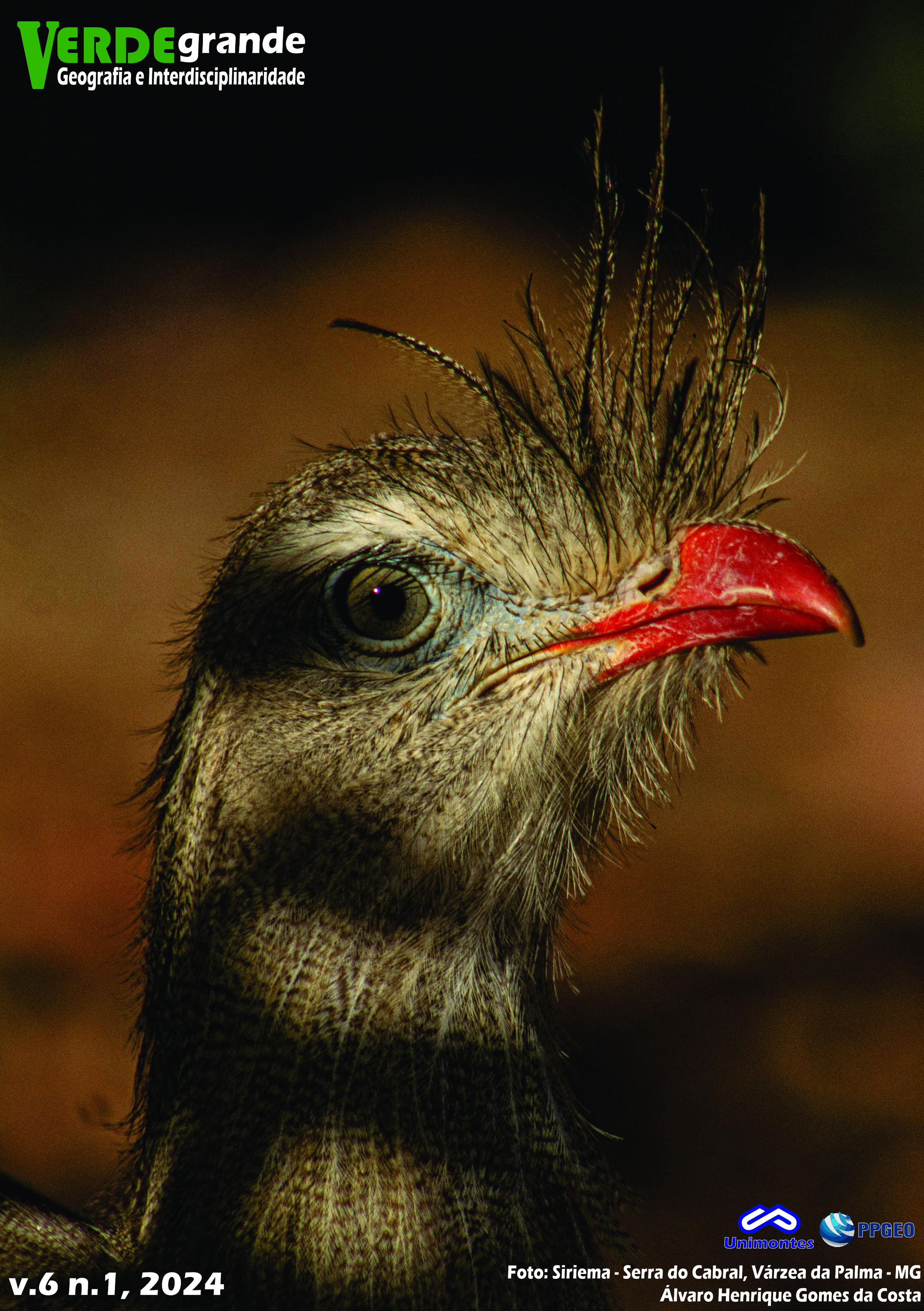Análise das transformações na Terra Indígena Paquiçamba a partir da construção da Usina Hidrelétrica de Belo Monte/PA
DOI:
10.46551/rvg2675239520241247264Keywords:
Juruna, YudjáAbstract
Environmental impacts have become the subject of intense national and international debates, in which heads of state and the scientific community discuss the importance of environmental preservation, especially in sensitive areas of the Amazon Biome. This issue becomes even more important when discussing the contributions of indigenous peoples to the preservation of nature, as well as the environmental and social impacts they suffer from the implementation of infrastructure projects. This context includes the Paquiçamba Indigenous Land, where there have been major transformations since the arrival of the Belo Monte Hydroelectric Power Plant. In this sense, the research sought to analyze the geoecological changes suffered in the Paquiçamba Indigenous Land after the installation of the Belo Monte Hydroelectric Power Plant. As a methodological procedure, remote sensing techniques were used to classify, segment and interpret images from the Landsat 5 and 9 satellites in 2011 and 2023. Among the results, it was possible to observe that considerable changes in the landscape were caused by the decrease in water and the increase in exploitation areas, making this an unstable environment for maintaining biodiversity as well as the traditions of the Juruna (Yudjá) indigenous peoples.
Downloads
References
BECKER, Bertha K. Amazônia. Editora Ática, 1990.
DE ARCANJO TURÍBIO, Luiz Mário; VELOSO, Gabriel Alves; LOBATO, Mateus Monteiro. Análise do índice de desflorestamento das terras indígenas Paquiçamba e Arara da Volta Grande do Xingu, da área diretamente afetada pela UHE Belo Monte entre os anos de 2000 e 2020. Universidade e Meio Ambiente, v. 7, n. 2, p. 30-44, 2022.
DE PAULA, Eder Mileno Silva et al. Compartimentação Geoecológica da Sub-Bacia do Baixo Rio Xingu–Amazônia Centro-Oriental, Brasil. Revista Equador, v. 5, n. 4, p. 128-150, 2016.
DE PAULA, Eder Mileno Silva; DE SOUZA, Marcos José Nogueira. Sistemas de informações geográficas na análise da vulnerabilidade ambiental da Bacia do Rio Ceará- CE. Revista Brasileira de Cartografia, v. 63, n. 4, p. 515-525, 2011.
DE SOUZA BALIEIRO, Bruna Taynara; VELOSO, Gabriel Alves. Análise multitemporal da cobertura do solo da Terra Indígena Ituna-Itatá através da classificação supervisionada de imagens de satélites. Cerrados, v. 20, n. 2, p. 261-282, 2022.
DE SOUZA, Vladimir; GALVANI, Emerson; DE SOUZA, Marta Luzia. Determinação e adequação da capacidade de uso da terra em bacia hidrográfica por meio de sistematização metodológica no SIG SPRING. Geografia (Londrina), v. 24, n. 1, p. 55-69, 2015.
NUNES, Juliana Faria; ROIG, Henrique Llacer. Análise e mapeamento do uso e ocupação do solo da bacia do alto do descoberto, DF/GO, por meio de classificação automática baseada em regras e lógica nebulosa. Revista árvore, v. 39, n. 1, p. 25-36, 2015.
PEZZUTI, J. et al. Xingu, o rio que pulsa em nós: monitoramento independente para registro de impactos da UHE Belo Monte no território e no modo de vida do povo Juruna (Yudjá) da Volta Grande do Xingu. São Paulo: ISA, 2018.
PEZZUTI, Juarez et al. Xingu, o rio que pulsa em nós: monitoramento independente para registro de impactos da UHE Belo Monte no território e no modo de vida do povo Juruna (Yudjá) da Volta Grande do Xingu. São Paulo: Instituto Socioambiental, 2018.
RODRIGUEZ, José Manuel Mateo; SILVA, Edson Vicente Da; CAVALCANTI, Agostinho de Paula Brito. Geoecologia das Paisagens: uma visão geossistêmica da análise ambiental. Imprensa Universitária, 2022.
Sabaj Pérez, M.H., 2015. Where the Xingu bends and will soon break. Am. Sci. 103, 395– 403.
WINEMILLER, Kirk O. Et al. Balancing hydropower and biodiversity in the Amazon, Congo, and Mekong. Science, v. 351, n. 6269, p. 128-129, 2016.
ZUANON, Jansen et al. Condições para a manutençao da dinâmica sazonal de inundaçao, a conservaçao do ecossistema aquático e manutençao dos modos de vida dos povos da volta grande do Xingu. Papers do NAEA, v. 28, n. 2, 2021.
ZUANON, Jansen et al. Condições para a manutençao da dinâmica sazonal de inundaçao, a conservaçao do ecossistema aquático e manutençao dos modos de vida dos povos da volta grande do Xingu. Papers do NAEA, v. 1, n. 2, 2021.
Downloads
Published
How to Cite
Issue
Section
License
Copyright (c) 2024 Nadson de Pablo Silva, Éder Mileno Silva De Paula, Gabriel Alves Veloso

This work is licensed under a Creative Commons Attribution-NonCommercial-NoDerivatives 4.0 International License.
You are free to:
Share — copy and redistribute the material in any medium or format
The licensor cannot revoke these freedoms as long as you follow the license terms.
Under the following terms:
Attribution — You must give appropriate credit, provide a link to the license, and indicate if changes were made. You may do so in any reasonable manner, but not in any way that suggests the licensor endorses you or your use.
NonCommercial — You may not use the material for commercial purposes.
NoDerivatives — If you remix, transform, or build upon the material, you may not distribute the modified material.
No additional restrictions — You may not apply legal terms or technological measures that legally restrict others from doing anything the license permits.


















 Esta obra está licenciada com
Esta obra está licenciada com 